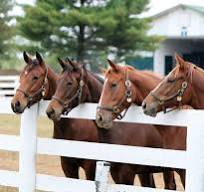Dog breeding is the practice of mating selected dogs with the intention of producing specific qualities and characteristics in their offspring. This process has been carried out for centuries by humans to create breeds of dogs that serve various purposes, such as working, companionship, or show. Dog breeding is a complex and controversial topic that raises ethical, health, and welfare concerns. In this text, we will explore the importance of dog breeding to farms and the implications of this practice. Dog breeding is a complex and responsible undertaking that requires careful consideration and knowledge to ensure the health and welfare of the dogs involved. Here are some necessary things to know in dog breeding
1. Breed Standards:
- Understand the breed standards set by kennel clubs or breed organizations for the specific breed you are breeding. This includes physical characteristics, temperament, and behavior traits that define the breed.
2. Health Testing:
- Prioritize health testing for genetic disorders and hereditary conditions common in the breed. This helps in selecting breeding stock that is free from hereditary diseases and promotes healthy puppies.
- Responsible Breeding Practices:
- Practice responsible breeding by only breeding dogs that meet the breed standards and are in good health. Avoid breeding dogs with known health issues or genetic abnormalities.
4. Breeding Pair Selection:
- Select breeding pairs carefully based on their lineage, health history, temperament, and conformation. The goal is to improve the breed and produce healthy, well-balanced puppies.
5. Genetics and Inheritance:
- Understand basic principles of genetics and inheritance to predict the traits and characteristics that offspring may inherit from their parents. This knowledge helps in making informed breeding decisions.
- Breeding Timing:
- Determine the appropriate timing for breeding based on the female dog’s reproductive cycle. Consult with a veterinarian for guidance on the best time for mating.
7. Pregnancy and Whelping:
- Educate yourself on the stages of pregnancy, proper prenatal care for the pregnant dog, and the whelping process. Be prepared to provide assistance if needed during labor.
8. Puppy Care and Socialization:
- Ensure proper care, socialization, and early training for the puppies. This includes vaccinations, deworming, and exposing the puppies to various stimuli to promote healthy development.
- Responsible Ownership:
- Screen potential puppy buyers carefully to ensure they are committed to providing a loving and responsible home for the puppies. Educate new owners on the breed’s needs and characteristics.
10. Legal and Ethical Considerations:
- Familiarize yourself with local regulations, licensing requirements, and ethical guidelines related to dog breeding. Ensure compliance with laws governing breeding practices.
11. Continuous Learning:
- Stay informed about advancements in veterinary care, breeding practices, and genetic testing in dog breeding. Continuously educate yourself to improve your breeding skills and knowledge.
By understanding these essential aspects of dog breeding and adhering to responsible breeding practices, breeders can contribute to the betterment of the breed, promote the health and well-being of the dogs, and ensure positive outcomes for both the dogs and their future owners.


